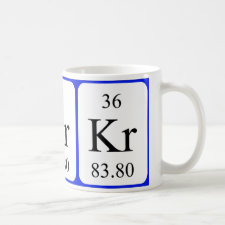
Authors: Asman S, Mohamad S, Sarih NM
Article Title: Effects of RAFT Agent on the Selective Approach of Molecularly Imprinted Polymers.
Publication date: 2015
Journal: Polymers
Volume: 7
Issue: (3)
Page numbers: 484-503.
DOI: 10.3390/polym7030484
Alternative URL: http://www.mdpi.com/2073-4360/7/3/484
Abstract: Two types of reversible addition-fragmentation chain transfer molecularly imprinted polymers (RAFT-MIPs) were synthesized using different monomers, which were methacrylic acid functionalized β-cyclodextrin (MAA-β-CD) and 2-hydroxyethyl methacrylate functionalized β-cyclodextrin (HEMA-β-CD), via reversible addition-fragmentation chain transfer (RAFT) polymerization, and were represented as RAFT-MIP(MAA-β-CD) and RAFT-MIP(HEMA-β-CD), respectively. Both RAFT-MIPs were systematically characterized using Fourier Transform Infrared Spectroscopy (FTIR), Field Emission Scanning Electron Microscopy (FESEM), Brunauer-Emmett-Teller (BET), and rebinding experimental study. The results were compared with MIPs synthesized via the traditional radical polymerization (TRP) process, and were represented as MIP(MAA-β-CD) and MIP(HEMA-β-CD). Morphology results show that RAFT-MIP(MAA-β-CD) has a slightly spherical feature with a sponge-like form, while RAFT-MIP(HEMA-β-CD) has a compact surface. BET results show that the surface area of RAFT-MIP(MAA-β-CD) is higher than MIP(MAA-β-CD), while the RAFT-MIP(HEMA-β-CD) surface area is lower than that of MIP(HEMA-β-CD). Rebinding experiments indicate that the RAFT agent increased the binding capacity of RAFT-MIP(MAA-β-CD), but not of RAFT-MIP(HEMA-β-CD), which proves that a RAFT agent does not always improve the recognition affinity and selective adsorption of MIPs. The usability of a RAFT agent depends on the monomer used to generate potential MIPs.
Template and target information: benzylparaben, BzP
Author keywords: molecularly imprinted polymer, methacrylic acid functionalized β-cyclodextrin, 2-hydroxyethyl methacrylate functionalized β-cyclodextrin, RAFT agent



Join the Society for Molecular Imprinting

New items RSS feed
Sign-up for e-mail updates:
Choose between receiving an occasional newsletter or more frequent e-mail alerts.
Click here to go to the sign-up page.
Is your name elemental or peptidic? Enter your name and find out by clicking either of the buttons below!
Other products you may like:
 MIPdatabase
MIPdatabase









